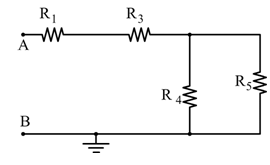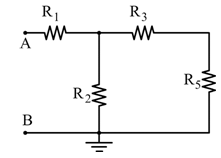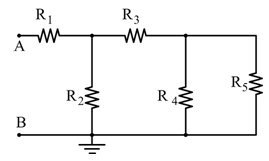Esercizio n.10 – Calcolo della resistenza equivalente
Analizziamo il circuito in quattro diverse configurazioni, a seconda dello stato degli interruttori T₁ e T₂. In ogni caso, calcoliamo la resistenza equivalente tra i punti A e B.
Dati del problema

✅ Caso A: T₁ aperto, T₂ chiuso
![]()
![]()
✅ Caso B: T₁ chiuso, T₂ aperto
![]()
![]()
✅ Caso C: T₁ e T₂ chiusi
![]()
![]()
✅ Caso D: T₁ e T₂ aperti
![]()
📊 Confronto finale



